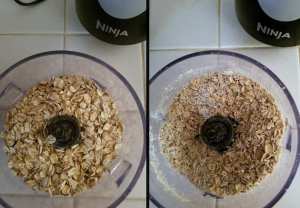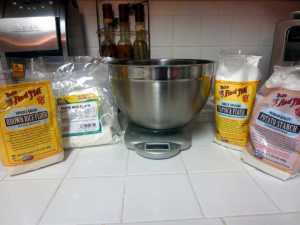I love cloth diapers. I’m even more fond of pocket diapers. It’s a personal preference, to be sure, but I like pocket diapers better because they have customizable absorbancy and they wick moister more than prefolds. This means that I don’t absolutely have to change the baby every time he or she pees, and you can hack your way to a diaper that lasts for 12 hours with the right inserts for overnight use.
The thing about ordering pocket diapers is that they come with microfiber inserts, or you can pay extra (at least all of the ones I have purchased). For someone who is budget-minded the extra fee is a deal-breaker, but the microfiber inserts aren’t very good.
I have had two heavy wetters. Hamlette is a heavier wetter than Hamling was, so I need something that absorbs a lot of liquid rather quickly. When you put a microfiber insert under the faucet the water beads and rolls off. This means that the diaper is more likely to leak if you use these inserts. Even paired with a hemp insert I was having a lot of trouble with leakage because the hemp absorbs slowly and the pee had nowhere to go but out as the microfiber failed.
To fix this I did some research about fabrics that absorb quickly and, preferably, a large quantity of liquid. I decided that a bamboo/cotton blend would be best, so I purchased a yard or two (I can’t remember) of a bamboo/cotton micro-terry from an online natural fabric store. If you’re not sure what micro-terry is, just think of those baby footie pajamas that are made out of material that’s like a super soft towel. That’s micro-terry.
If I remember right, it was somewhat less economical as I was hoping, but I think I cut the insert cost in half by making my own.
This time around (because I didn’t make enough micro-terry inserts) I didn’t want to buy the fabric and have to strip it and all that jazz. So I raided my ridiculously large stash of prefolds. When I was buying prefolds I didn’t know what to look for (or what I liked) yet, so I got some that were too wide. My mom ordered me a few that were thinner and I ended up primarily using those and using the wider ones as a sort of last resort.
So I cannibalized them.
These inserts do not hold as much liquid as the bamboo ones, but they absorb fast enough that they last through two to three pees. That’s pretty good. As long as I’m not picking up a wet baby I’m happy.

So, to make these you’ll need a sewing machine, thread, scissors, a marking device, a stencil, and fabric of your choice. If you’re starting with a yard of fabric, you’ll need to decide what thickness you want – I made the bamboo inserts with four layers of fabric – and you’ll need pins to keep everything in place. You’ll also want to wash the fabric a few times in super hot water before you start.
I used an existing insert with a slight modification to the length for my stencil.
Trace your stencil onto the fabric. Sew according to the lines you drew, keeping the edge of the sewing machine foot on the line. Repeat until all of the inserts are sewn, like the picture on the upper right. Trim threads and cut out inserts on the line you drew. Voila!
The bottom picture is a newly cut insert (left) and one that’s been through the wash a couple of times (right). The washed one isn’t exactly pretty, but they’re inside of a pocket diaper, who cares what they look like? The bamboo inserts did not fray at all, so your finished appearance depends on the fabric you chose. Also, you could put more effort into it and actually finish the edges. I didn’t do that because I am teh lazy-sauce.
 I don’t make these often because I prefer to ferment my oats before I make oatmeal for better nutrient availability, but this is great for those times you just need a quick snack.
I don’t make these often because I prefer to ferment my oats before I make oatmeal for better nutrient availability, but this is great for those times you just need a quick snack.


 Melissa Naasko is a friend of mine, so reading this book was a little like sitting and listening to her talk about food. She moved away a few years ago, so it was nice to read this and “hear” her voice for a bit. She is a wonderful woman and I miss hearing her stories.
Melissa Naasko is a friend of mine, so reading this book was a little like sitting and listening to her talk about food. She moved away a few years ago, so it was nice to read this and “hear” her voice for a bit. She is a wonderful woman and I miss hearing her stories.



